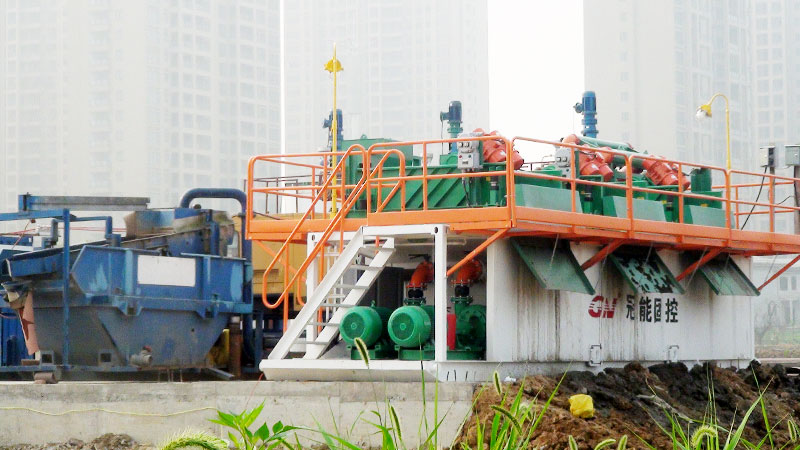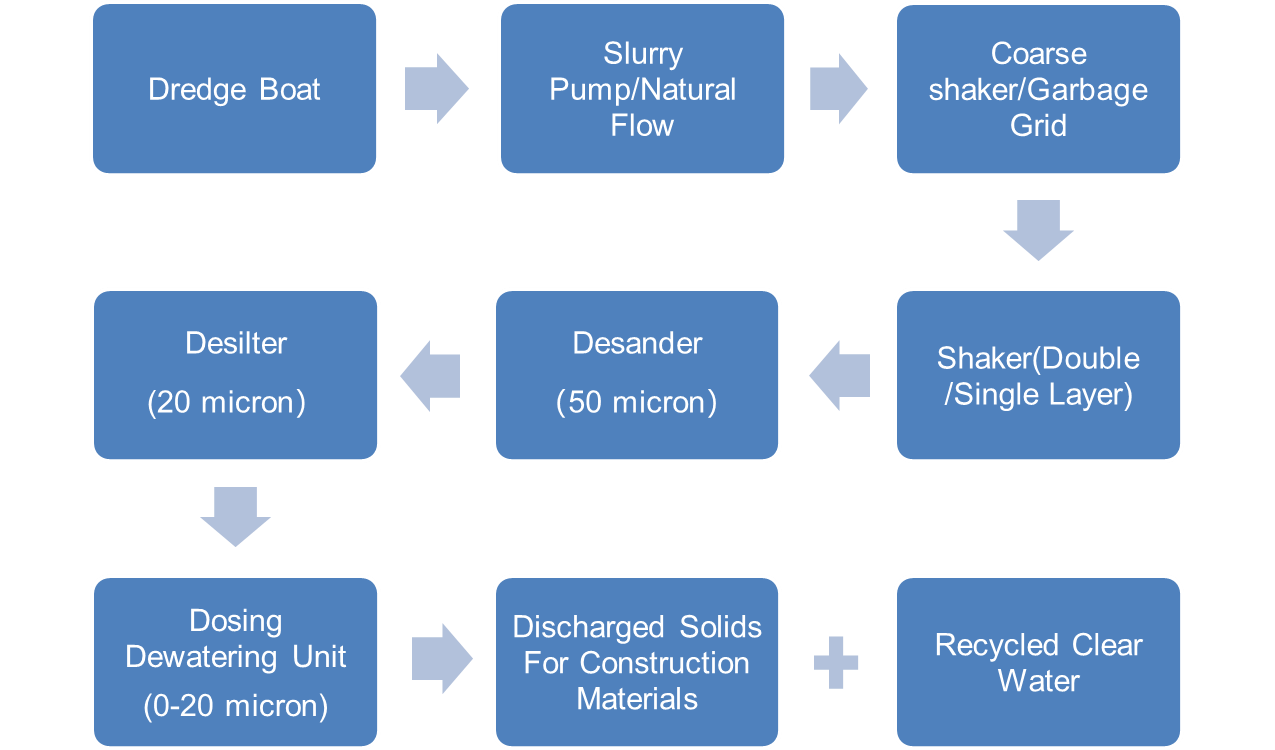GN China
- Phone:+86-13731500403
- Fax: +86-316-5276997
- Email: sales@gnseparation.com
- Location: Beijing,China
During the dredging of rivers and lakes, all kinds of garbage and silt will be produced. Classification and separation equipment is needed to separate dredging waste and sludge. GN can provide turnkey solid-liquid separation solution, main equipment includes: garbage coarse shaker, gravel fine shaker, desander, desilter, horizontal dewatering centrifuge or dewatering screw press, or filter press. The separated solids can be used as construction materials and the clear water can be returned to the river or lake. GN Dredge sludge dewatering equipment are built based on different treatment capacity requirements, standard systems include: 120m3/h (500gmp), 240m3/h (1000gpm), 480m3/h(2000GPM), 960m3/h (4000GPM). Customized systems can be also provided to meet the requirements of different working conditions.

1)Customized turnkey solution system includes design, manufacturing, assembly, debugging, after-sales.
2) Modular and integrated design, small footprint and convenient transportation.
3) 5-stage separation treatment, dry solids and clear liquid achieve easily.

| 1 | Garbage Coarse Screen | Sludge from dredge boat or transition pool goes through garbage grid or treated by coarse shaker to remove debris and bulk solids. Debris may include: grass, roots, leaves, cans, plastic, rags and bottles. |
| 2 | Gravel Fine Shaker | If there is less garbage and debris, double-layer linear vibrating shaker can be used for screening, the upper and lower layers are respectively used to remove 2 mm and 0.5 mm solid materials. Solids less than 0.5mm fall into an independent compartment of mud tank along with the slurry, waiting for the centrifugal pump to extract. |
| 3 | Desander | The centrifugal pump delivers the mud to the second stage which is the desanding stage. The slurry is sent to the desanding cyclone, and solid particles larger than 50 microns are removed. The mud overflowed from the desanding cyclone enters into the second separate compartment, and the solids discharged from the cyclone bottom fall onto the bottom screen for drying. |
| 4 | Desilter | The slurry with solids larger than 50 microns was removed from the second compartment then transferred by a second pump, and enters into the desilting cyclone to remove the solids larger than 20 microns. Then overflow liquid from the desilting cyclones enters the third compartment, while the material discharged from cyclone bottom falls onto the underflow screen for drying. |
| 5 | Fine Sludge Dewatering | Liquid after treated by the desilter contains fine sludge less than 20 microns, which is pumped to the flocculation dewatering unit by a feeding pump. Chemical flocculants are added before feeding. The flocculation dewatering unit can be Horizontal Decanter Centrifuge, Dewatering Screw Press or Filter Press. Different dewatering units suit for different working conditions with different advantages. See details afterwards. |
As a professional manufacturer of integrated set of Dredge Sludge Dewatering Equipment, GN can also design customized solutions based on customer working conditions. Optimize the treatment of river dredging sludge to improve the treatment effect and reduce costs.